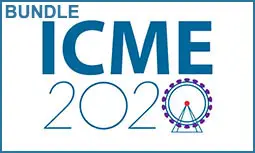-
Members: FreeSPS
IEEE Members: $11.00
Non-members: $15.00Length: 09:33
09 Jul 2020
Detecting anomaly in images is challenging due to the high dimension nature of image data. While the previous learning-based anomaly detection approaches can detect a particular type of anomaly precisely, they often fail in detecting multiple types of abnormal samples simultaneously.
We identify the two specific types of anomalies that can be precisely detected by either compress-based or reconstruction-based anomaly detection approaches, named global anomaly and local anomaly. We then propose Glad, an anomaly detector that can precisely detect both of them at the same time. Glad adopts a joint approach combining the density estimation and auto-encoder. Firstly, it designs a multi-modal density estimation model to derive the latent representation probability for identifying the global anomaly. Then, it uses structural similarity to measure the reconstruction loss for characterizing local anomaly. Finally, both anomalies can be diagnosed according to the joint density of latent representation and reconstruction loss. Experimental results on public benchmark datasets demonstrate that Glad outperforms the state-of-the-art methods significantly.
We identify the two specific types of anomalies that can be precisely detected by either compress-based or reconstruction-based anomaly detection approaches, named global anomaly and local anomaly. We then propose Glad, an anomaly detector that can precisely detect both of them at the same time. Glad adopts a joint approach combining the density estimation and auto-encoder. Firstly, it designs a multi-modal density estimation model to derive the latent representation probability for identifying the global anomaly. Then, it uses structural similarity to measure the reconstruction loss for characterizing local anomaly. Finally, both anomalies can be diagnosed according to the joint density of latent representation and reconstruction loss. Experimental results on public benchmark datasets demonstrate that Glad outperforms the state-of-the-art methods significantly.



